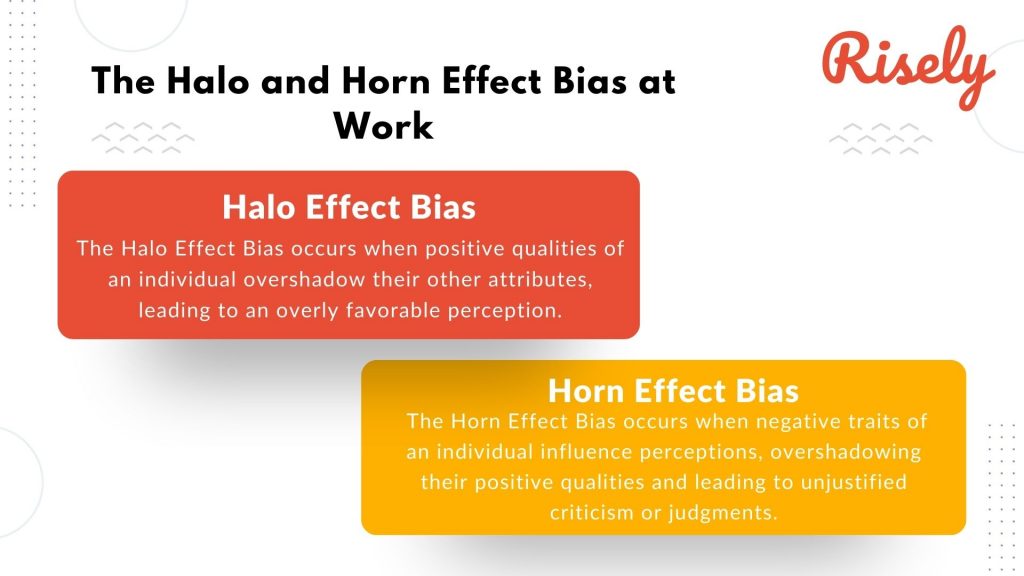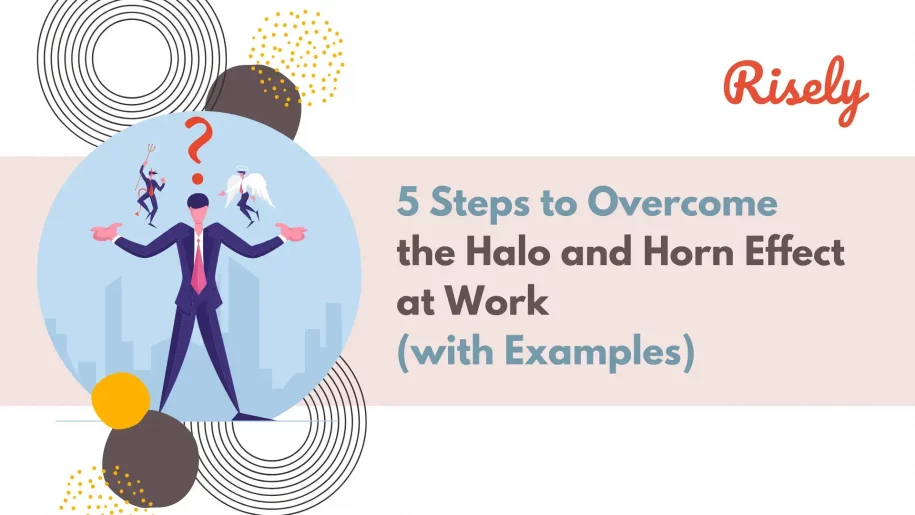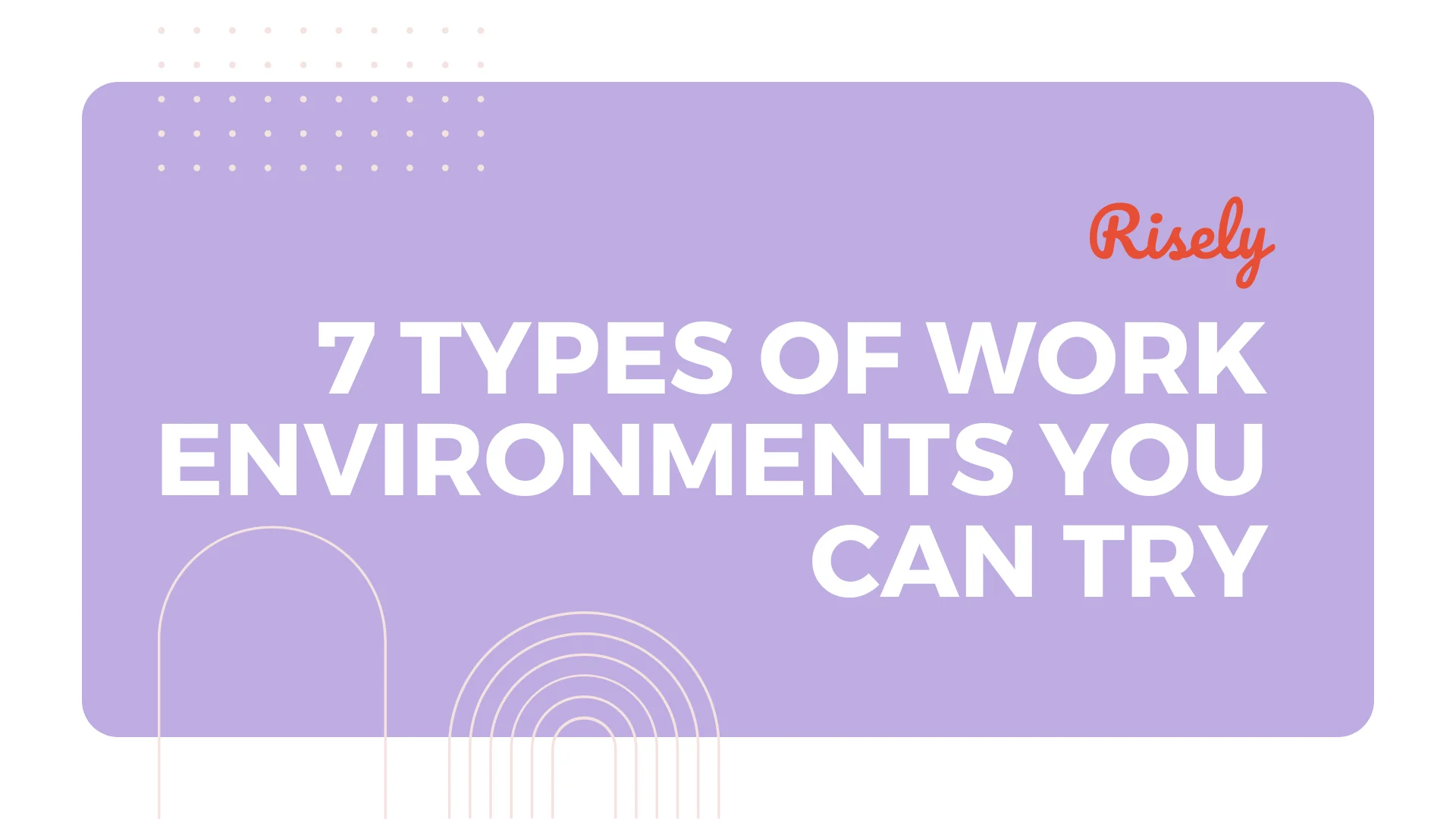5 Steps to Overcome the Halo and Horn Effect at Work (with Examples)
Managers must make sound decisions in the workplace without bias clouding their judgment. This is especially important when it comes to hiring, performance management, and recruitment decisions. Unfortunately, the halo and horn effect are two biases that can severely hinder managerial judgment. To help you avoid these harmful effects in the workplace, this blog provides information on how to avoid the halo and horn effect and insights into overcoming bias. Biases rule our decisions much more than rational thought plenty of times, but we fail to recognize them. Nonetheless, all of us use decision-making models and heuristics daily. However, decision-making is a crucial function for managers, and they cannot let irrational biases lead them toward their final choice. Consequently, it is vital to understand how these biases work and how one can overcome them in the workplace to become more emotionally intelligent. Before beginning with the halo and the horn effect, you can read more about the most common biases observed among managers in the workplace here.What is Halo Effect Bias?
The halo effect is the bias that causes people to give more favorable evaluations to individuals based on one or only a few traits. In other words, we tend to favor those who once made a good impression on us. This can lead us to overestimate the abilities and performances of those around us. In addition, it can hinder our ability to assess their performances objectively. The halo effect is likely due to the scarcity principle, which states that people are more willing to give a good evaluation of something they have little of in abundance. Thus, we tend to only give favorable assessments based on first impressions and superficial information. Once this initial impression has been made, it becomes harder for us to change our minds about someone, even if new information comes out about them later. For example, suppose a manager was considering hiring an employee for a position and had plenty of experience in the field they were applying for but only worked alongside one person who was great at the job. In that case, they may be more likely to hire that person even if their qualifications do not fit the position.Example of Halo Effect Bias in the Workplace
A manager consistently praises an employee for their strong communication skills. As a result, the manager may begin to view the employee as being highly competent in all areas, even if there is no evidence to support this belief. The employee’s perceived communication skills may then “halo” or positively influence the manager’s overall perception of the employee’s performance and abilities. It leads the manager to overlook areas where the employee may be lacking and may even result in the employee being given additional responsibilities or promotions based on this biased perception. Managers need to be aware of the halo effect and strive to objectively evaluate employee performance rather than relying solely on their subjective impressions.Other Interesting Reads

What is The Horn Effect Bias?
The horn effect bias is the opposite of the halo effect bias. It occurs when we give less favorable evaluations to individuals based on one or only a few traits. In other words, we tend to reject those who once made a wrong impression on us. This can lead a manager to underestimate the abilities and performances of those around them. In addition, it can hinder the manager’s ability to assess their performances objectively. The horn effect bias is likely due to the availability principle, which states that people are more willing to give an unfavorable evaluation of something they have plenty of in abundance. Thus, we tend not to give an unfavorable assessment of things we don’t know much, like experience or qualifications.Example of Horn Effect Bias in the Workplace
Suppose a manager is responsible for leading a department within a company. The department has had a string of successful projects, and upper management praised the manager for their leadership. However, the manager consistently takes credit for the success of the projects, even though they were the result of the hard work and contributions of the entire team. The manager also tends to underestimate the contributions of one member in particular, who missed a report in their initial days. This manager acts based on a belief created from one incident and continues to judge the person similarly.
What is the Impact of Halo and Horn Effect Bias?
The halo and horn effect bias can have several negative consequences. First, it can lead to unfair decision-making as we are less likely to give individuals an accurate appraisal of their abilities. Second, it can limit our ability to learn from others as we may not be able to take what they have taught us and apply it in a new situation. And finally, it can hamper relationships as people are more likely to feel animosity or hostility towards those who have made them angry or frustrated in the past. The halo and horn effect bias is often seen as a negative phenomenon because it can lead to us making unfair assumptions about others. The horn and halo effect distorts how people see others in the workplace. It creates an impression of people being good or bad, with no middle ground. This is dangerous because it can lead to discrimination or, worse, in some cases. Managers relying on the horn and halo effect bias to make decisions about employees are at risk of causing high attrition in their teams due to irrational judgments.Understanding with Examples – The Halo and Horn Effect in Performance Appraisals
Halo Effect: During a performance appraisal, a manager observes that an employee consistently excels in their project deliveries and receives positive feedback from clients. Due to this positive perception, the manager tends to overlook some areas where the employee’s performance could be improved. They rate the employee highly in all aspects, including teamwork and communication, assuming that their exceptional project work translates to excellence in all areas. Horn Effect: In another performance appraisal, a manager focuses on an employee’s occasional lateness and a minor conflict they had with a colleague. These incidents create a negative impression in the manager’s mind, leading them to downplay the employee’s positive contributions. As a result, the manager rates the employee lower than they might deserve in areas such as project performance and problem-solving, due to the influence of these negative incidents.Why is Halo and Horn Effect Bias Dangerous for Managers?
At work, it’s essential to be objective and fair in assessing employees. As a result of this bias, employees can become over-confident and complacent, and their performance can suffer if viewed under a Halo. On the flip side, the Horn effect will lead managers to demonize certain employees even after repeatedly displaying outstanding performance in the team. This bias can also lead to discrimination in the workplace, as managers may unfairly favor some employees over others. Furthermore, when people are constantly evaluated in a negative light, it can lead to feelings of resentment and anger. This can damage the relationship between the employee and their manager or coworkers, which is not something either party will benefit from. On the other hand, repeated positive evaluations of a person, even without reasons, can create similar feelings of harmony that would disrupt team cohesion. Instead, they should use objective performance assessments alongside individualized feedback to create a more accurate picture of an employee’s strengths and weaknesses. They should attempt a holistic evaluation that captures all facets of the individual instead of a reductive one, based on which you can provide constructive feedback. You can learn more about providing constructive feedback to your employees from our toolkit!How to Prevent Halo and Horn Effect Bias from affecting you?
When it comes to bias in the workplace, everyone experiences it to some degree. But how do you avoid the halo and horn effect bias? A few simple steps sum it up –Recognize And Understand The Bias
The first step to beating the halo and horn effect bias from affecting is to be aware of it. You can tackle it only if you are actively aware of the impact. To do so, you have to observe your decision-making process and notice if you give great focus to objective and rational analysis of all the facts or if it is the bias that holds your hand to the decisions. If you rely too much on the first impressions made long ago, it’s time for you to take some steps. In addition, constantly remind yourself that you should not make decisions based on how someone looks or how they sound.Disrupt The Cycle
The second step to overcoming the halo and horn effect is to be objective and rational when evaluating employees. It would be best if you did this in all processes, from recruitment to performance appraisal. Remember, it’s essential to use clear criteria to have an accurate judgment. Furthermore, refrain from making assumptions about an employee’s motivations or character; rely more on their performance data. Additionally, remember that everyone has strengths and weaknesses – so don’t try too hard to find a single reason for doing well or struggling.Change Your Approach
If you find that your biases are affecting your decisions, it’s time to change your approach. Try to be more impartial in everything you do, and remember that everyone makes mistakes sometimes. Above all, remain open-minded and unbiased when evaluating employees – this will help prevent the halo and horn effect bias from harming their careers. A change in management styles might help you get things done. Additionally, you must be aware of your attitude and how it may affect how you view employees. Finally, it’s also important to be patient and allow employees to display their best performance. Sometimes changes in a person’s environment or management can take some time to manifest themselves – so don’t expect immediate results.Be Objective and Use Specific Examples in Performance Appraisals
Instead of relying solely on general impressions, gather concrete instances of both positive and negative behaviors or outcomes. This approach ensures that the evaluation is based on factual information rather than influenced by an overall positive or negative bias. By referring to specific incidents, you can provide a more accurate and balanced assessment of an individual’s performance.Sharpen Your Decision-Making Skills
Biases negatively impact decision-making skills of managers. The key to overcoming the challenges put forth by biases lies in developing sharp decision-making abilities that rest on objectivity. The process begins with understanding and learning the decision-making skills that every manager needs, such as critical thinking, analysis, judgment, and the ability to think from different perspectives. At times, the issues in your decision-making skills might not be visible. But if you repeatedly find your team untangling the aftermath of a decision, it is high time for some action. Test the efficiency of your decision-making skills now with Risely’s free self-assessment for managers to check where you stand. Risely is your buddy in solving people management challenges that hold back your team. With its AI-enabled leadership coaching platform, Risely designs unique solutions that cater to the needs of every team manager.Conclusion
The halo and horn effect bias can harm your career and your team’s performance. By understanding the definition and examples of the effect, you can help avoid it in the workplace. Additionally, you can train your team members to identify and avoid bias in their interactions. Make sure to check out our blog for more tips on how to stay safe and thrive in the workplace!Practice active listening with us to prevent bias in your decisions
Download the active listening toolkit to enhance your skills as an objective team manager
FAQs
How halo and horn effect is a barrier of communication?
The halo and horn effect can be a barrier to communication as it can distort the perception of the communicator and the receiver. The halo effect occurs when one positive attribute of a person or situation influences the overall judgment, while the horn effect occurs when one negative attribute influences the overall judgment. These biases can affect how a message is received, interpreted, and acted upon, leading to misunderstandings and miscommunication.
What is halo and horn effect in performance appraisal?
In performance appraisal, the halo effect occurs when a manager’s overall positive impression of an employee influences their rating of specific performance criteria. In contrast, the horn effect occurs when a manager’s overall negative impression of an employee affects their rating of specific performance criteria. Both biases can result in inaccurate assessments of employee performance.
Other Related Blogs
7 Types Of Work Environments You Can Try
7 Types Of Work Environments You Can Try In today’s work culture, various types of work environments exist to cater to different philosophies, needs, and job functions. Each type offers…
How To Handle Criticism At Work? 7 Tips For Managers
How To Handle Criticism At Work? 7 Tips For Managers Handling criticism at work is a challenge that many managers face. Criticism can be difficult to handle whether it’s from…
Building Inclusive Workplaces: DEI Goals and How to Achieve Them
Building Inclusive Workplaces: DEI Goals and How to Achieve Them According to a LinkedIn study, 76% of job seekers mentioned diversity as a critical factor in evaluating potential workplaces. Yet, we…
How to Overcome the Top 10 Manager Biases at Work?
How to Overcome the Top 10 Manager Biases at Work? Ever feel a gut instinct tugging at your decisions, even in the face of logic? Nobel laureate Daniel Kahneman would…


